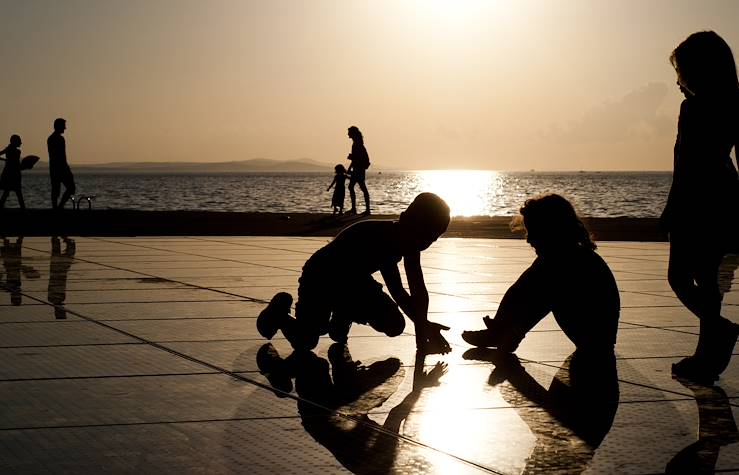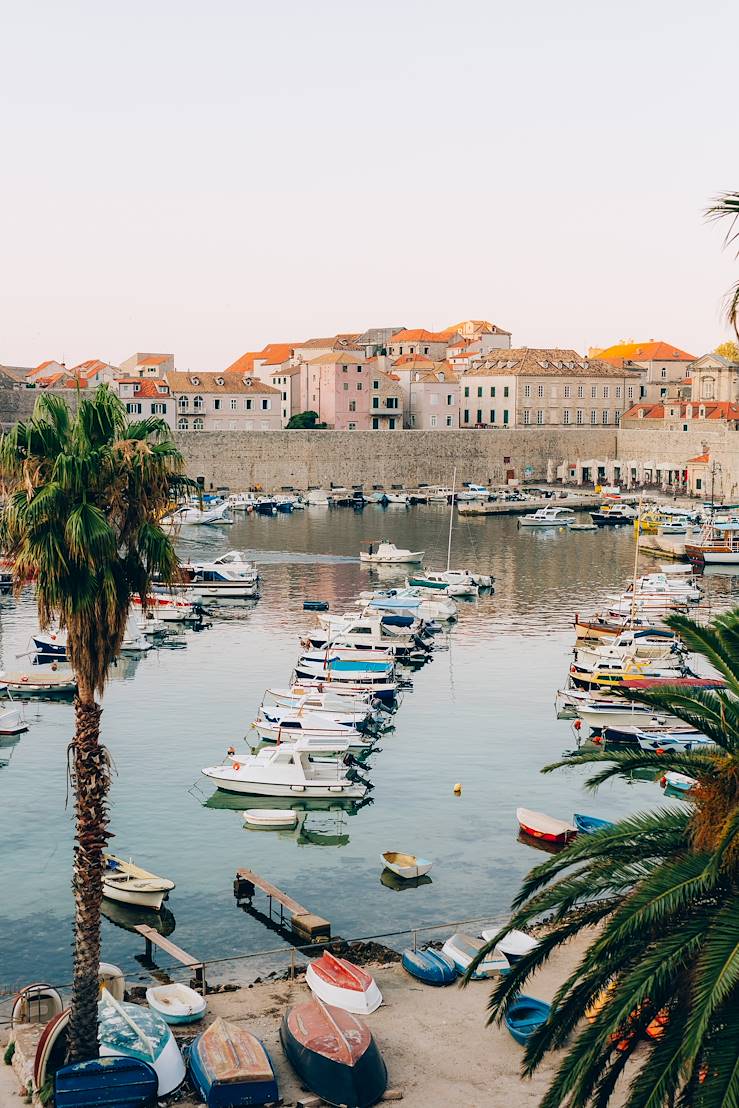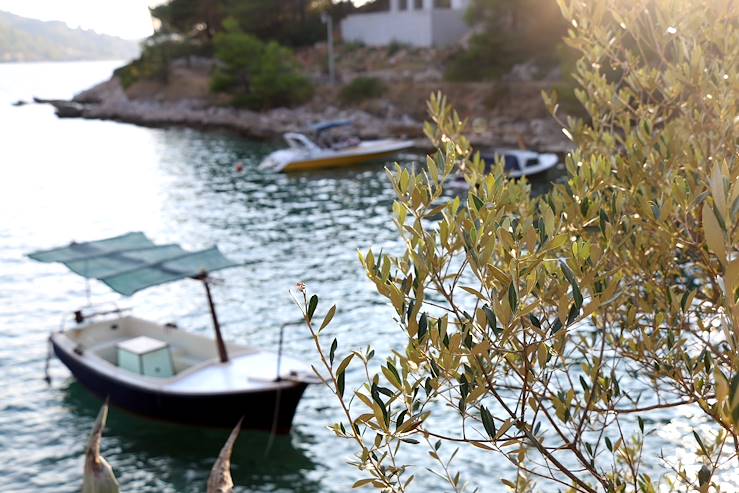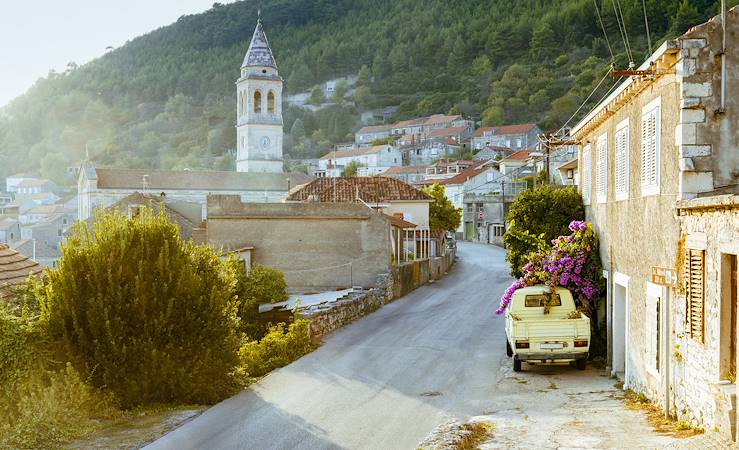- A comprehensive itinerary for your first trip to Croatia
- A seaside break in Korcula to soak up the sweetness of island life
- Take time to discover the old cities of Zadar, Split, Dubrovnik and Plitvice Nature Park
- Customise your trip with a Trogir tour, evening cocktail on Mount Srd in Dubrovnik, and outings to Montenegro or Bosnia
Contact one of our Croatia specialists + 44 (0) 20 3958 6120










Discover Croatia

Your journey
The roads in Croatia are beautiful, weaving their way through the mountains. Between two historic towns, take a seaside stop on the pretty island of Korcula.Route
Flight to Zagreb
Transfer and two-night stay in a hotel in the historic centre that epitomises the beautiful Austro-Hungarian period. Be sure to head to the coffee shop to sample the creamy strukli pastries, or go to the spa for a pampering treatment.
Zagreb
You have the Zagreb City Card travel pass and can travel around as much as you like. The Cathedral of the Assumption of the Virgin Mary and of the Saints Stephen and Ladislaus in Kaptol - whose two spires can be seen from all over Zagreb - is a monumental Gothic structure. The impressive glass cube of the National Library is also impressive, plus the city is full of museums, including archaeological, technical, historical and ethnographic, and the Museum of Contemporary Art is particularly good. In the inns, you can taste Malvoisie wine from Istria, subtle whites from Slavonia, or Dalmatian Plavac. The Croatian capital is a manageable size to explore on foot, and airy with plenty of green spaces.
Zagreb - Plitvice
PIck up your hire care and hit the road for Plitvicka Jezera. Enjoy a overnight stay in a park inn which has a fairy-tale, quirky, cosy, rustic-chic feel. The rustic feel is complimented with modern facilities such as a sauna, spa and gym.
Plitvice - Zadar
Included in the itinerary - Plitvice Lakes National Park. The chain of lakes and waterfalls is beautiful. Dense beech and fir forests are reflected in the turquoise waters, and from small insects to the brown bear, wildlife takes full advantage of this beautiful place that is left to thrive under its protected UNESCO World Heritage status. Many hiking trails are available.
Road to Zadar. Enjoy a two-night stay in a modern villa overlooking the sea and islands. In addition to comfortable rooms and a lovely outdoor pool to rest and relax, the hotel has a lovely restaurant to enjoy dinners come evening.
Zadar
Zadar's tragic history has made it possible to set up many public gardens, which give the small town a very trendy feel. Explore the surviving monuments such as the Roman Forum; the Byzantine Church of Saint-Donat from the ninth century; or the Cathedral of Saint Anastasy from the 12th and 13th centuries; plus its numerous boutiques. The sea organ on the shore promenade lets you hear the movements of the water.
Zadar - Split
Drive to Split. Enjoy a two-night stay about six miles from the city. Make use of the infinity pool, private beach, restaurants, impeccable spa with views of the blue sky and sea in this modern hotel, which contrasts with the ancient city of Split.
Split
Old Split was born from a single monumental ensemble: the palace that Roman Emperor Diocletian had built at the end of the third century to spend his retirement in the country. There were residential buildings, a temple to Jupiter, baths and barracks. The Diocletian Palace still enhances the waterfront today. In the Middle Ages, houses were built inside and out, the palace was bursting at the seams and became a city. The Emperor's mausoleum was transformed into a Christian church (with a 12th-century bell tower and a 17th-century choir, it is now Saint Domnius Cathedral). Venetian architects also came here to practice their craft. There are lots of nooks and crannies to explore, plus hidden little spots to enjoy a maraschino and pancakes.
Split - Korcula
Take a ferry across to Korcula. Enjoy a two-night stay in a charming little hotel. The restaurant terrace overlooks the sea and provide the perfect backdrop to enjoying fresh fish and octopus.
Korcula
The hotel's beach is made for lazy days under the sun. Yet the call of Korcula will get you moving: Marco Polo is said to have been born here. And a visit to the (supposed) family home of this merchant adviser is a must. In its ramparts, the old town is splendid. St Mark's Square, the Renaissance facades assemble around the cathedral at the beautiful Venetian gate. Island walks through the vineyards and olive groves are delicious and the coast is full of pleasant surprises.
Korcula - Orebic - Dubrovnik
Take a ferry across to Orebic and drive to Dubrovnik. Return the hire car. Enjoy a two-night stay in a cliffside location. The stylish hotel has a balcony overlooking the sea. The pool and spa are the perfect way to relax. In the kitchen, the chef and his team use fresh seafood and seasonal, locally-grown produce to create delicious Mediterranean dishes.
Dubrovnik
The damage of the country's history has been repaired, and Dubrovnik is now a beautiful place to discover where the architecture shines through, especially the old town with its winding alleyways and rooftops. The layout of the ramparts was designed in the 14th century. This remarkably preserved defence system has recently returned to service as the backdrop to the series Game of Thrones. Inside the walls, noble houses line up as if on parade. The little Renaissance St Saviour's Church is splendid. The 14th century Romanesque cloister of the Franciscan cathedral is a masterpiece. Romanesque, Gothic, Renaissance and Baroque in parts, the fortified convent of the Dominicans is another major attraction, but the pleasure of walking along the well-planned streets alone is worth the visit. Not to mention the small beaches on the outskirts of the city.
Dubrovnik - Return Flight
Transfer to the airport and return flight.
A la carte
Trogir Tour -
Split This ancient city was founded in the third century BC by Greek settlers, the Romans called it Tragurion. Escaping warring factions since at least the 13th century, it is now a lovely place to explore on foot, full of architectural and cultural heritage, but with plenty of modern amenities included. Visiting Trogir gives you an insight into a full millennium of European history, which is why it has been given UNESCO World Heritage status.
Optional - Half-day, with an expert local driver and private guide
Sunset cocktail in Dubrovnik
The Dubrovnik funicular, which was one of the city's main attractions during the last twenty years of socialist Yugoslavia and badly damaged by Serbo-Yugoslavian forces in 1991, has returned to service after a long restoration. It takes you to an altitude of 1,300ft in four minutes, with a splendid view of the city. Travel up for drink on Mount Srd as the sun sets over the Adriatic for truly memorable evening.
Optional
With a few more days
Visit the Bay of Kotor in Montenegro to see the beautiful bay itself, plus head further inland offer some pleasant surprises. The small towns of Risan and Perast still bear the hallmark of their maritime past and are full of amazing spots where you can taste octopus salad, baklava or pomegranate syrup. Cetinje, the historic capital of the country, and Lovcen Park are not very far away and well worth a visit, plus the road that connects Kotor to the summit of Mt. Lovcen reveals magnificent stretches of the Dinaric Alps. At the bay, look out over Herceg Novi, Gulf of Tivat, Verige (a narrow and enclosed passage), Perast again, and Kotor. You'll see small islands with ancient monasteries; wonder at the majesty of the landscape; take a dip in a quiet cove surrounded by oleander and mimosas; choose a nice restaurant where you can have lunch, before setting off exploring to find another hidden cove or beach.
Sarajevo in Bosnia - Sarajevo has had a rich and eventful history since its creation by the Ottomans in 1461. The first governor of Bosnia built a mosque; a covered market; a hammam; an inn; and his 'Saray' palace here, which gives the city its name. At the time, Sarajevo was a commercial crossroads under the impetus of the merchants of Ragusa, a refuge for Jews exiled from Andalusia in the 14th century and the assembly point for a huge Orthodox community who built their church here. The Austro-Hungarian Empire took possession of the city in the late 19th century before joining the Kingdom of Yugoslavia in 1929 consolidation and the Socialist Federal Republic of Yugoslavia in the post-war period. With its darkest hours during the conflict between 1992 and 1995. Even today, a walk in the city makes it possible to feel the stigmas still alive from the war: the pavements still bear the marks of shells, the facades of buildings the traces of impact behind makeshift repairs. It's interesting the see this history live alongside the forward-thinking city that Sarajevo has become.
Optional
A Rough Idea of Price
Our local concierges
Travel diary app
UK airport lounge
CO2 absorption




